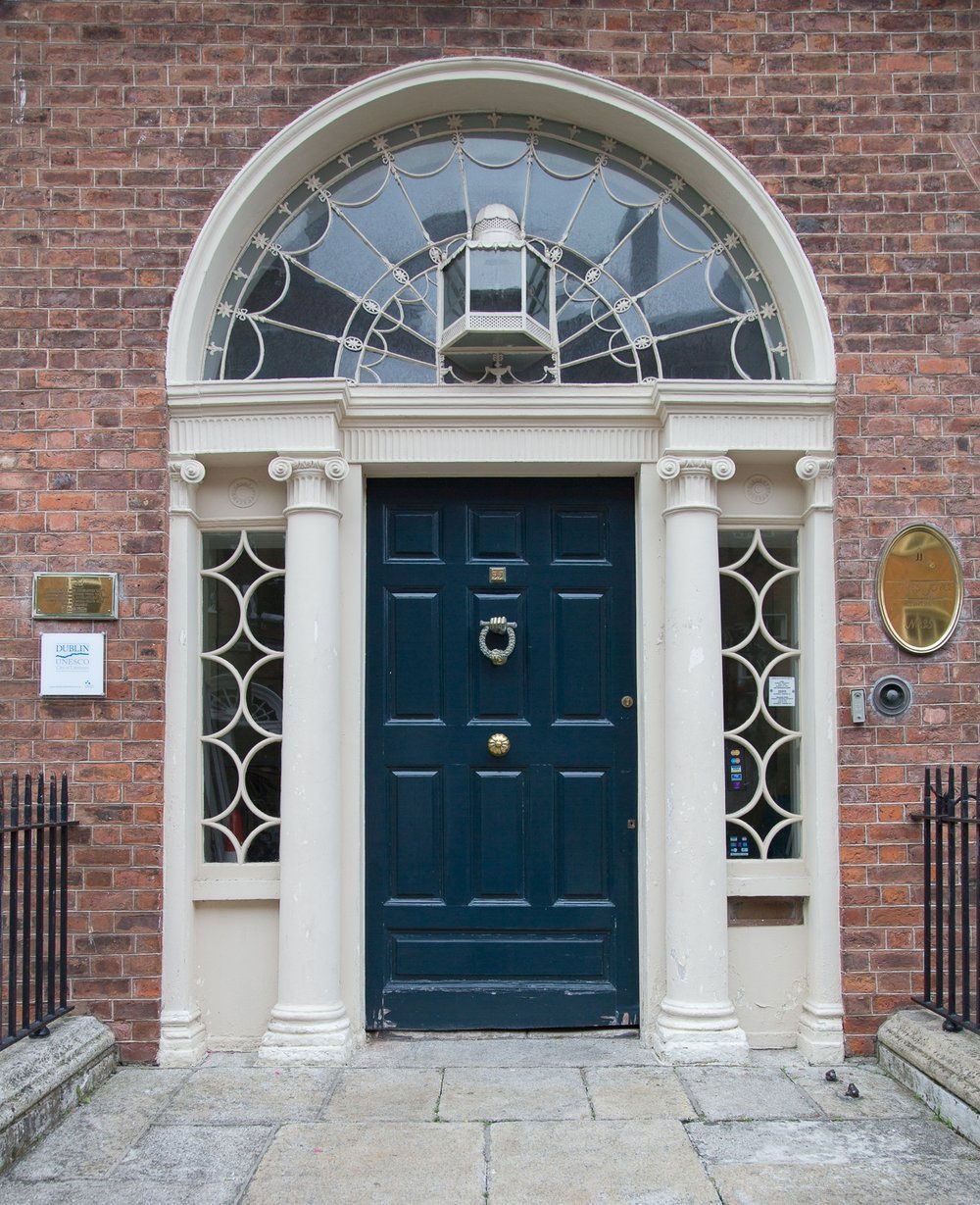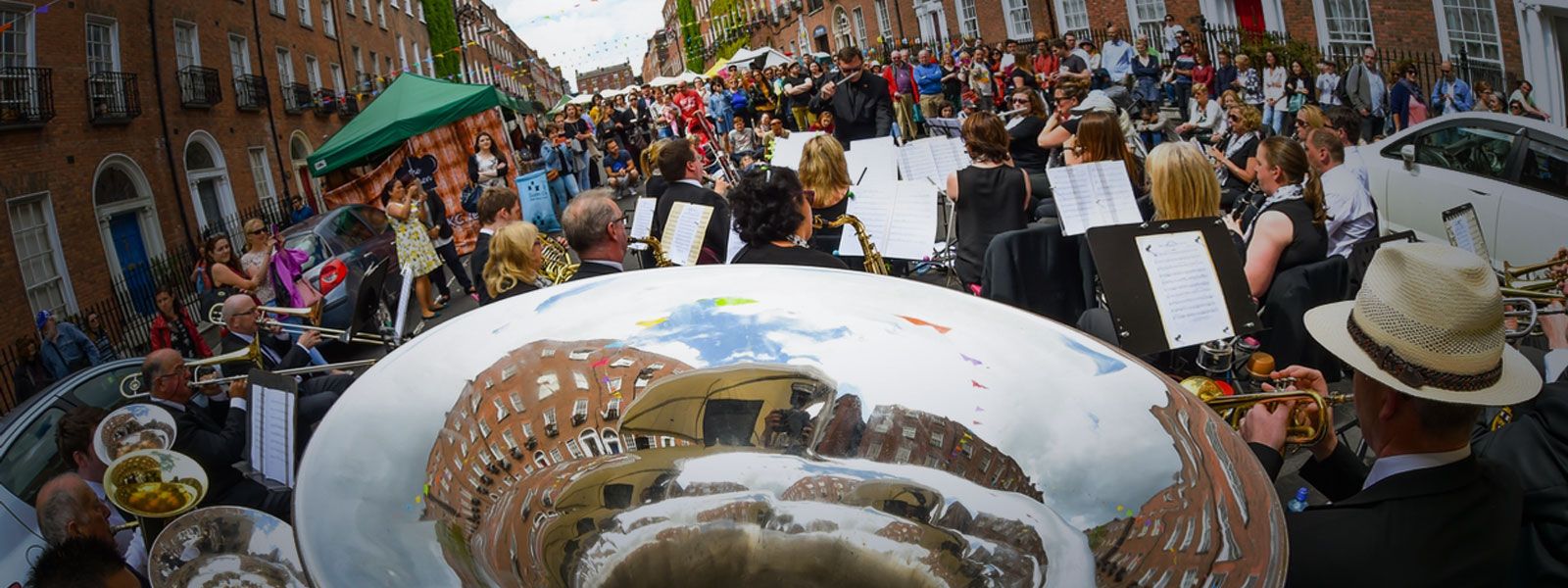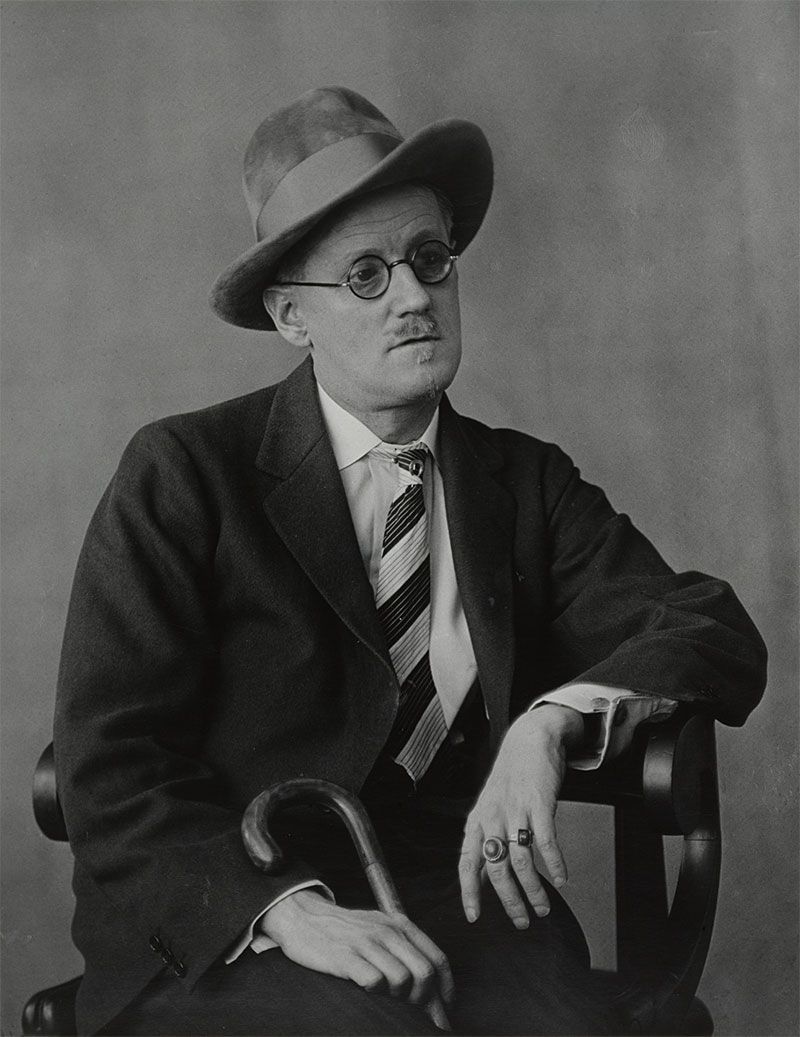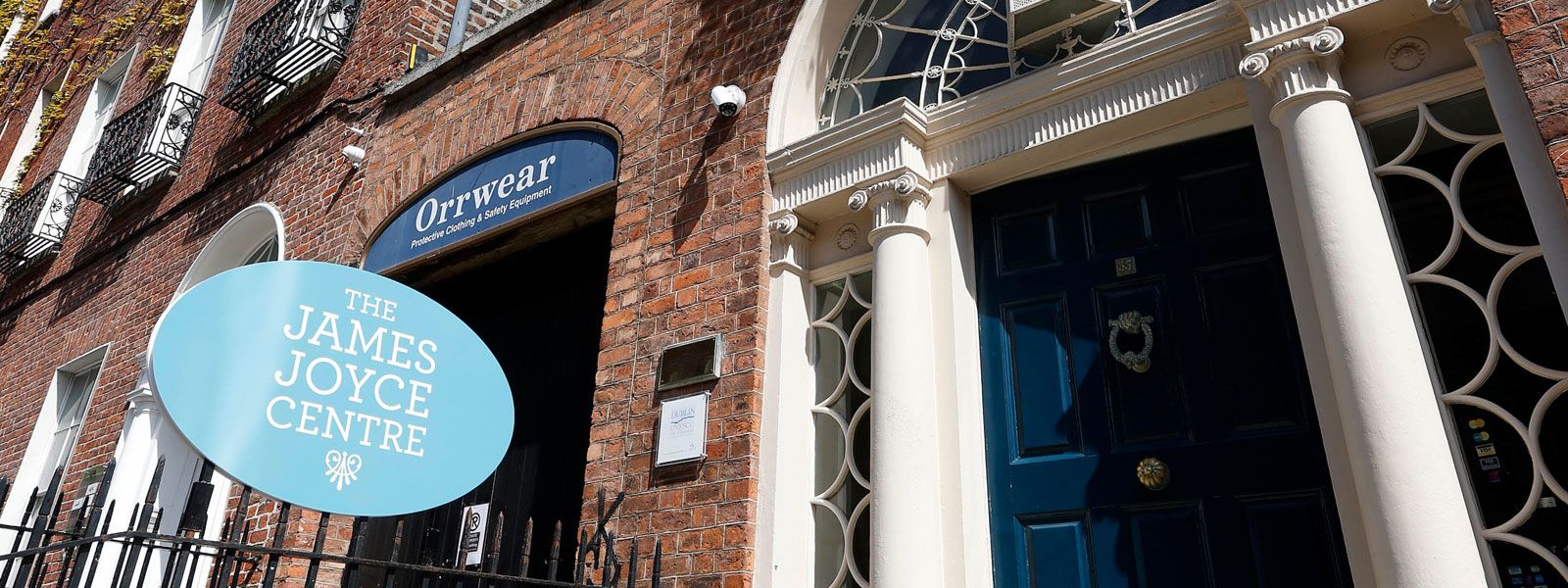The James Joyce Centre
The James Joyce Centre in Dublin, Ireland is the organiser of the Bloomsday Festival. It has organised the festival on behalf of the city of Dublin since 1994.
Located in a gorgeous 18th-century townhouse in the old Georgian quarter of Dublin, the Centre is a museum and cultural institution dedicated to the life and works of James Joyce and, more broadly, Irish literature, history, and culture. Opened in 1982, the Centre hosts literary and art exhibitions, interactive guides, film screenings, walking tours around Dublin city, lectures, concerts, theatre performances, public readings, educational courses for adults and students, and other activities.
The Centre has the original door from No. 7 Eccles Street, the home of Leopold and Molly Bloom in Ulysses, along with a series of stunning murals painted by his great-grandnephew, Paul Joyce. The Paul Léon Collection contains furniture and appliances of Joyce’s friend Paul Leon from 1930s Paris, some of which Joyce used while writing his novel Finnegans Wake. The Maginni Room on the ground floor was the dance studio of Denis J. Maginni, “professor of dancing & c,” a famous Edwardian dance instructor who makes several notable appearances in Ulysses. The Kenmare Room and Library on the first floor are exquisite parlour rooms used for exhibitions and events. The entire house contains stunning examples of high Georgian decoration and plasterwork.
The Centre offers popular walking tours year-round, taking people to the shops, schools, homes, and streets that Joyce immortalised in his work, including Belvedere College, the Gresham Hotel, Hardwicke Street, O’Connell Street, Davy Byrnes, Grafton Street, and the National Library.
The Centre is located on 35 Great George’s Street North. For more information about us, please visit our website at www.jamesjoyce.ie.
The Bloomsday Festival is organised by the James Joyce Centre in partnership with the Department of Tourism, Culture, Arts, Gaeltacht, Sport and Media, Fáilte Ireland, and Dublin UNESCO City of Literature.
Bloomsday Festival homepage video by Godfrey Jordan.

The James Joyce Centre
35 North Great George’s St.
Dublin 1.

About James Joyce
James Augustine Aloysius Joyce (1882 – 1941) is one of Ireland’s most influential and celebrated writers. His most famous work is Ulysses (1922), which follows the movements of Leopold Bloom in a single day on 16 June 1904. Joyce’s other major works include the short story collection Dubliners (1914), the novels A Portrait of the Artist as a Young Man (1916) and Finnegans Wake (1939), the play Exiles (1918), and the collections of poetry Chamber Music (1907) and Pomes Penyeach (1927).
Joyce was born in 45 Brighton Square, Rathgar, County Dublin on 2 February 1882, the eldest son of John and Mary ‘May’ Joyce. John Joyce was from Cork and had come to Dublin after failing in his medical studies in Cork University. He married May Murray in 1880 and they had fifteen children, only ten of whom survived into adulthood. He was reasonably wealthy, owning property in Cork and Dublin as well as having an inheritance, but he also liked to drink a great deal and was a profligate. By the time Joyce was just nine, his father had lost his property, his money, and his last full-time job. He moved his family into the poor northcentral part of Dublin, where much of Joyce’s work takes place.
In spite of the family’s decline and his father’s drinking, Joyce had a good education for the time, attending private Jesuit schools at Clongowes Wood College, Belvedere College, and University College (now University College Dublin), where he studied modern languages. His experiences there would be fictionalised in Dubliners and A Portrait of the Artist as a Young Man.
Upon graduating from university in 1902, Joyce spent some time in Paris to study medicine. He returned to Ireland in April 1903, however, because of his mother’s failing health. After her death in August 1903, Joyce stayed in Dublin until October 1904, earning some money through occasional work as a teacher, a concert singer, and by writing book reviews for The Daily Express newspaper. On 10 June 1904, Joyce met Nora Barnacle, a young woman from Galway who was working as a chambermaid at Finn’s Hotel on Nassau Street. They went out together for the first time on Thursday, the 16th of June 1904, the day commemorated in Joyce’s Ulysses. Nora and Joyce would remain together for the rest of his life, although they did not formally marry until 1931.
After leaving Ireland with Nora in October 1904, Joyce went first to Pola (now Pula in Croatia) where he taught English at the Berlitz School. In March 1905, they moved to Trieste, where they would live for the next ten years. The Joyce’s first child, Giorgio, was born in 1905, and their second child, Lucia, was born in 1907.
At this time, Trieste was part of the Austro-Hungarian Empire. When the First World War broke out in 1914, the Joyce’s were in danger of internment as they were British citizens. In June 1915, they moved to Zurich as refugees. Much of Ulysses was written in Zurich over the next five years where Joyce was assisted in his work by Harriet Shaw Weaver, Frank Budgen, William Butler Yeats, Ezra Pound, and others.
The Joyce family moved to Paris in July 1920 and stayed there, with some exceptions, for the rest of his life. It was in Paris that Joyce met Sylvia Beach, an American expatriate who would publish Ulysses for the first time in 1922 in her bookshop Shakespeare & Company. Joyce found himself at the centre of an extensive literary and artistic circle that included the likes of F. Scott Fitzgerald, Ernest Hemingway, Luis Buñuel, Gertrude Stein, Samuel Beckett, Ezra Pound, and others. From 1930, after Beach had relinquished the rights to Ulysses, Joyce became very close with Paul Léon, another expatriate living in Paris. Léon became Joyce’s business advisor and close friend and helped him publish his final book, Finnegans Wake, in 1939.
Throughout this time, Joyce had faced acute health problems, especially with his eyes. In addition, his daughter Lucia suffered severe mental health problems and had to be institutionalised, causing Joyce and his family tremendous stress. In 1940, Joyce fled to Zurich after the German invasion of France. He died on 13 January 1941 at the age of 58. He is buried in Fluntern Cemetery in Zurich.


